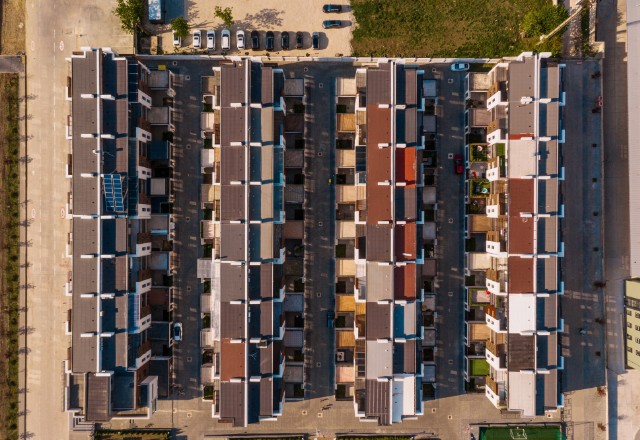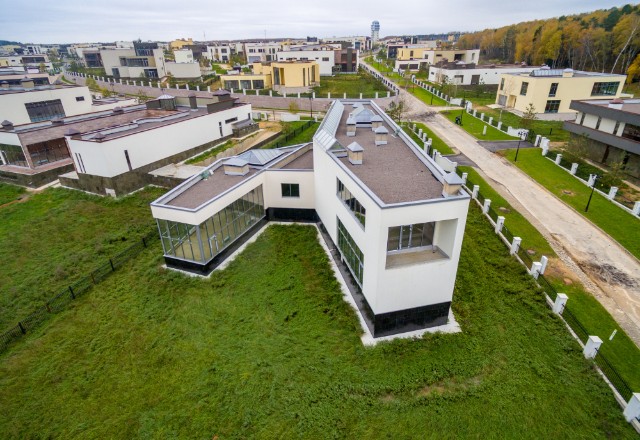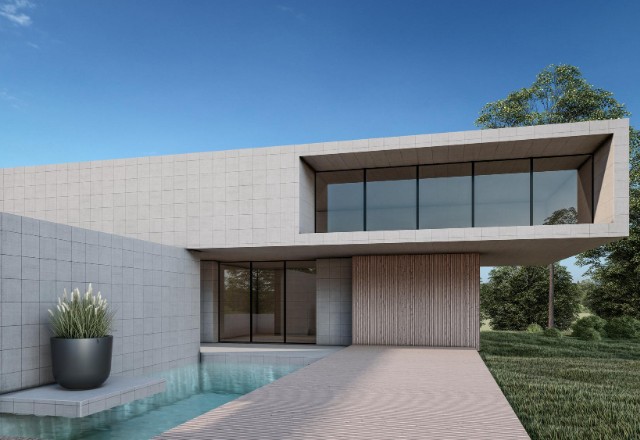A flat roof is a roof that has a low slope or no slope at all, usually seen on commercial buildings, apartment complexes, and modern residential homes. Unlike sloped roofs, which have a pitch to allow water to drain off quickly, flat roofs require proper installation and maintenance to ensure that water drains efficiently. Flat roofs are often covered with different roofing materials, such as rubber, EPDM, TPO, and PVC, to improve their lifespan and waterproofing abilities. In this article, we will explore the lifespan of a flat roof, focusing on rubber roofs and factors that affect their longevity.
Disclaimer: This article is for informational purposes only and should not be considered as professional advice. While we strive to provide accurate information, the material provided in this article is for general information only and may contain inaccuracies or errors. We recommend consulting with a professional roofing contractor for specific advice on any questions or concerns you may have. Advance Roofing LLC has been proudly serving the Spokane, WA area for many years with a high level of quality roofing services. We are readily available to answer any questions you might have – don’t hesitate to contact us!
Overview of lifespan
Flat roofs have gained popularity in commercial buildings due to their energy efficiency and flexibility. The longevity of a flat roof relies on several elements, including the roofing material, installation process, and routine upkeep.
Proper installation and regular maintenance play a crucial role in ensuring the longevity of a flat roof. A professionally installed flat roof can last anywhere from 10 to 50 years, depending on the materials used and the severity of weather conditions in the area. In contrast, a poorly installed flat roof with no regular maintenance may have a much shorter lifespan.
Rubber roofs, specifically EPDM roofing, are known for their durability and longevity. On average, a rubber roof can last up to 30 years with proper installation and regular maintenance. Factors such as exposure to direct sunlight, extreme weather conditions, and foot traffic can affect the lifespan of a rubber roof. However, the waterproof and UV resistant qualities of EPDM roofing membranes contribute to their durability.

Common Types of Flat Roofs
When it comes to flat roofs, there are several popular choices for roofing materials. Whether you are a property owner or a roofing contractor, understanding the different types of flat roofing options available can help you make an informed decision about which type of roof is best suited for your building.
Built-up Roofs (BUR)
Built-up Roofs (BUR) are a type of roofing material that has been available on the market for a long time. It consists of layers of tar and gravel over roofing felt. A layer of gravel is then placed on top of the tar and gravel mixture to complete the roofing process.
One of the main advantages of Built-up Roofs is their durability. They have been known to last for over 20 years with proper maintenance. Additionally, BUR is a cost-effective roofing material, making it a popular choice for commercial property owners and roofing contractors alike.
However, there are also some drawbacks to consider. The added weight from the tar and gravel layers can put stress on the roof, which may require additional support to be installed. Additionally, Built-up Roofs typically last for only 15 to 20 years before needing to be replaced.
Modified Bitumen Roofs
Modified Bitumen Roofs (MBRs) are a popular flat roofing material for both commercial and residential applications. They are made from an asphalt-based material that is modified with rubber or plastic polymers to enhance their performance. MBRs are installed using a self-adhering compound or through a torch-down application that fuses the material to the roof surface.
The lifespan of MBRs varies depending on the quality of the material and the installation. On average, they can last between 10 to 20 years or more with proper maintenance, making them a durable flat roofing option. MBRs are known for their flexibility, which allows them to expand and contract with temperature changes, reducing the risk of cracking and splitting.
One of the primary advantages of MBRs is their low-maintenance requirements. They typically do not require frequent upkeep to maintain their functionality. Additionally, they offer excellent waterproofing capabilities, keeping the building safe from water damage.
However, there are also some cons to consider when choosing MBRs. Torch-down application method, which involves using an open flame, can pose a safety hazard if not done correctly. It is important to hire a professional roofer to install MBRs through a torch-down method and ensure they adhere to strict safety protocols. Additionally, overlapping joints can become a weak spot in the roof, making it vulnerable to leakage over time.
Ethylene Propylene Diene Monomer (EPDM) Rubber Roofs
Ethylene Propylene Diene Monomer (EPDM) Rubber Roofs have become a popular choice for flat roofing applications since their introduction in the 1960s. This single-ply membrane roofing material is made from a synthetic rubber compound that offers excellent resistance to sunlight, ozone, and other weather elements. EPDM rubber roofing is commonly used on commercial and industrial buildings due to its durability and cost effectiveness.
One of the main advantages of EPDM rubber roofs is their exceptional durability. They can last up to 50 years or more with proper installation and maintenance, surpassing the lifespan of many other flat roofing materials. EPDM roofs can withstand extreme temperatures, making them suitable for various climatic conditions. They also possess remarkable resistance to sunlight damage, which can cause other roofing materials to fade or crack over time.
While EPDM rubber roofs have numerous advantages, there are also some drawbacks to consider. As a single-ply membrane, EPDM roofs may be vulnerable to puncture or tearing from sharp objects or prolonged foot traffic. In addition, they may require additional insulation to improve their energy efficiency, especially in colder regions.
EPDM rubber roofs are compatible with various installation methods, including mechanical anchoring, ballasting, or adhesive attachment. Mechanical anchoring
involves using screws or similar fasteners to secure the edges of the roof, while ballasting involves weighting down the membrane with gravel or other heavy materials. Adhesive attachment involves bonding the membrane directly to the roof surface using a special adhesive. Each of these methods has its advantages and disadvantages, depending on the specific characteristics of the roof and building.
Finally, EPDM rubber roofs are a cost-effective option for flat roofing. They are generally less expensive than other materials, such as built-up roofs or modified bitumen roofs. Additionally, they offer high energy efficiency, which can lead to reduced heating and cooling costs for the building owner.
Thermoplastic Polyolefin (TPO) Membranes
Flat roofs are commonly found on commercial and residential buildings and require a specialized type of roofing material. One of the most popular flat roofing options is the Thermoplastic Polyolefin (TPO) membrane. TPO membranes are made from a single-ply roofing material that is designed to be energy-efficient, puncture-resistant, and easy to install.
TPO membranes are constructed with a blend of plastic and rubber materials that give them excellent durability and weather-resistance. They are highly reflective and have a white surface that helps to reflect sunlight and reduce heat absorption. This reflectivity
helps to keep the building cooler, reducing the need for air conditioning and lowering energy costs.
The TPO membrane is a preferred choice for flat roofs since it is easy to install, requires minimal upkeep, and is resistant to punctures and other damages. The installation process of TPO membranes is quick and straightforward, making it a cost-effective option for commercial flat roofs that require new roofing material.
TPO membranes offer many advantages for commercial flat roofs. Their reflectivity helps to reduce the amount of heat absorbed, saving energy and lowering cooling costs. They are also highly durable, with a lifespan of up to 30 years. This durability means that they require less maintenance and repair, saving you money in the long run.
The TPO membrane is resistant to mold and algae growth, improving the indoor air quality and reducing the risks of respiratory issues for the building’s occupants. Moreover, the TPO membrane’s puncture-resistant surface prevents water from seeping into the building’s interior, reducing the likelihood of water damage in severe weather conditions.

Flat Roof Lifespan and Key Factors That Affect It
A flat roof’s lifespan is influenced by many variables, including the type of roofing material, quality of installation, regular maintenance, and extreme weather conditions. When determining the lifespan of their flat roof, commercial property owners must take into account all these factors.
Quality of Materials Used
When it comes to flat roofs, using quality materials is key to ensuring longevity. Flat roofs are unique in that they have a horizontal surface, which means they are more susceptible to water damage compared to sloped roofs. As such, the type of material used greatly impacts the overall lifespan of the roof.
One of the most popular materials for flat roofs is PVC (polyvinyl chloride). PVC roofs are known for their energy efficiency, and if installed correctly, can last up to 30 years.
Similarly, EPDM (ethylene propylene diene monomer) roofs, which are made of a strong, rubber-like material, can last up to 50 years with proper maintenance.
Modified bitumen roofs, made of asphalt and a variety of other additives, have an average lifespan of 20 years.
Asphalt roofs, which are highly resistant to UV rays and can withstand extreme weather conditions, have a lifespan of around 15-20 years.
It’s important to note that while each material has its pros and cons, the overall lifespan of any type of roofing material greatly depends on the quality of materials used and how well the roof is maintained over time. This includes regular inspections and preventative maintenance to address any potential issues before they become major problems.
One option to consider is lightweight single-ply roofing. While it may not be as well-known as some other roofing materials, lightweight single-ply roofing can have a similar or longer lifespan compared to more traditional options when properly installed and maintained. Some of the benefits of lightweight single-ply roofing include easy installation and repair, as well as a range of material options including PVC and thermoplastic polyolefin.
Proper Installation and Maintenance
Proper installation and maintenance are crucial to ensuring the longevity of flat roofs. Professional roofers should be employed for the installation of flat roofing systems, with the use of premium materials. By utilizing premium materials and having the installation performed by professionals, flat roofs can have extended lifespans.
Regular inspections and preventative maintenance are also essential in maximizing the life expectancy of flat roofs. Inspections should be carried out regularly to detect early signs of wear and tear such as loose seams, blisters, and accumulation of water and debris. If left unnoticed, these issues can cause major problems that can shorten the roof’s lifespan.
Preventative maintenance can involve simple cleaning and ensuring that the roof’s surface is free of debris. This maintenance can help prevent water from accumulating and causing water damage to the roof’s surface. Regular cleaning can also prevent any unnecessary damage from occurring to the roof’s membrane or material.
Ignoring proper installation and maintenance can lead to serious consequences such as leaks, which can cause costly repairs and impact productivity within commercial buildings. It is important to invest in the proper installation and maintenance of flat roofing systems to extend their life expectancy and save costs in the long term.

Climate and Weather Conditions
The lifespan of a flat roof can greatly depend on the climate and weather conditions to which it is exposed. Extreme natural elements such as heavy storms, hail, snow, rain, sun, and high winds can result in significant damage to roofing materials over time. As a result, it is important to choose the right type of roofing material to ensure it responds well to the specific climate in your area.
Asphalt, for example, is a popular choice for flat roofs, but it can expand and contract in extreme temperatures, causing cracks and leaks.
On the other hand, thermoplastic polyolefin (TPO) is highly resistant to UV rays and is ideal for areas with warm and sunny climates.
Ethylene propylene diene monomer (EPDM) is also a durable and popular option for flat roofs, especially in areas with colder climates.
In addition to selecting the right roofing material, regular maintenance and inspections are crucial to prevent damage caused by weather conditions. It is important to clear any debris or standing water from the flat roof as these can lead to leaks and deterioration of the roofing material. Inspections should be conducted regularly, especially after severe weather events, to detect any damage early.
Foot Traffic on the Roof Surface
Foot traffic is a potential risk to the integrity of a flat roof surface. The weight and movement caused by excessive foot traffic can damage the roofing membrane and significantly reduce the overall lifespan of the roof. This is why it is important to limit foot traffic on flat roofs as much as possible. However, in commercial settings, it is often unavoidable.
Providing designated walkways and access points is an effective measure to distribute weight more evenly and minimize the impact of foot traffic on the roof surface. Reinforcing these pathways using materials such as pavers or adding insulation boards can also help to mitigate the risk of damage to the membrane.
Apart from these preventative measures, regular inspections should be conducted to identify any damage caused by foot traffic. Prompt repairs should be made to prevent any further membrane degradation or water damage. Any penetrations or roof penetrations that lead to foot traffic should be sealed with appropriate materials to prevent future damage.
It is important to note that even with proper reinforcement and regular inspections, foot traffic can contribute to decreased roof lifespan. Therefore, it is recommended to limit foot traffic to essential personnel only and reduce unnecessary traffic whenever possible.
Conclusion
The lifespan of a flat roof depends on a variety of factors. Proper installation, regular maintenance, and professional cleaning are crucial for ensuring that a flat roof lasts for many years to come. Professional roofing contractors should be hired to ensure the highest level of expertise and experience in the installation, maintenance, and repair of flat roofs.
The lifespan of a flat roof can be affected by several factors, including foot traffic, extreme weather conditions, water damage, and regular wear and tear. Proper reinforcement and regular inspections are necessary to minimize damage to the membrane.



 509-201-4190
509-201-4190
